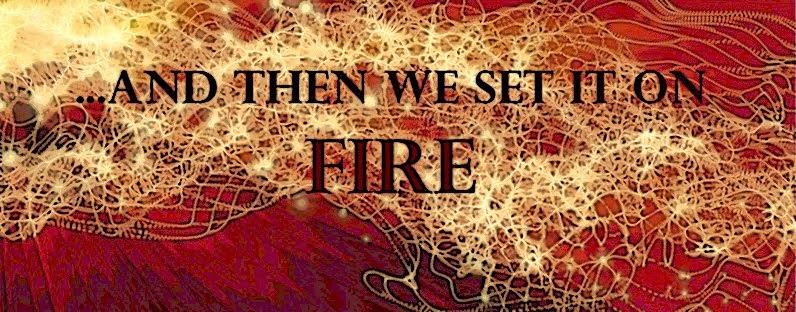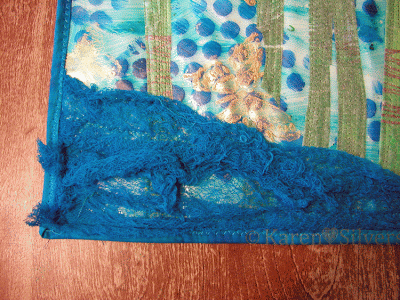
I have been working with fabrics for about 25 years and started to quilt in 2003.
I came to quilting through a chance. I've promised my, at that time 3 yrs old son, to
make him a good-night -picture, a kind of "dream-catcher". At that time I had been
working with textiles – sewing, felting, screen printing - but I had decided to try out
something new, and make a quilt.
It fascinated me, captured my imagination and right away I knew with absolute
certainty, that I had found the medium I wanted to work with in the future, the medium
I can express my feelings and thoughts.
I consider quilting a very feminine craft and not because it is mostly practiced by
women but because the softness of the textiles, the fineness of the lines, the freedom
of the colors appear to me as reflections of feminine attitude.
I was very lucky in my teacher. I was looking for new examples and inspirations
and soon I became acquainted with the work of Nancy Crow. Here again I had this
absolute certainty of being on the right way in finding my own voice. Nancy's work
had showed me the endless possibilities to be found in a traditional craft when
interpreted by an artistic approach. Again, chance was on my side and soon after
having started to quilt I could participate her workshop in Switzerland. I have been
attending several of her workshops since and her way of working has influenced
mine deeply. I learned the significance of the good workmanship which goes hand
in hand with the artistic sensibility and creativity. I learned to accept myself as a
complex person, I learned about artistic humility and the search – sometimes almost
a desperate one – for the right way to express myself. All above I learned that at
the end it is my responsibility how much and on which way I use my own artistic
potential.
Rapidly I've started to dye my own fabric. I invest lot of time and energy to have a
broad choice of colors and I never stop before I reach the right hue I had imagined.
My colors have to glow and illuminate from inside so they can bring the forms to
define their own place in the space. I aim to create dynamic and independent forms
in an organic surrounding, with lots of freedom and without conformity.
My understanding of "good art" is similar that of Le Corbusier, the architect: "You
employ stone, wood and concrete, and with these materials you build houses and
palaces. That is construction. Ingenuity is at work. But suddenly you touch my heart,
you do me good, I am happy and I say: "This is beautiful." That is Architecture. Art
enters in." (Le Corbusier: Vers une Architecture, 1923)
My art is the expression my deepest feelings. I don't want to show anything new but
try to make my surrounding apparent and visible in a way I see it.
I'm content when my works, the forms and colors not only express something and
result in a good visual picture, but when they "return" to me and broaden my own
horizon and perceptions.
Usually I work on several series at the same time, several, because life is dynamic
and never monotonous, series because they allow me to work on the same theme
from different point of views and with different techniques. My most important series
are the Color Compositions and the Cityscapes. I machine-piece my tops, I use
experimental screen-printing and other surface design techniques.
I am Hungarian but have been living in Switzerland since 1988. (24 years) Both of
these countries have formed my views of life. I am the impulsive Hungarian and the
contemplative Swiss at the same time. My world is never black and white. It is full of
colors and nuances.
I have a university degree in Architecture.
Recently I am working as a high school teacher for art and maths.
For more about my works, ideas, musings, experiences and influences, read my
blog:
http://keller-kerchner.blogspot.com






















































